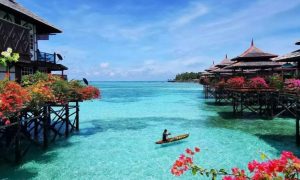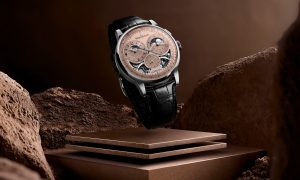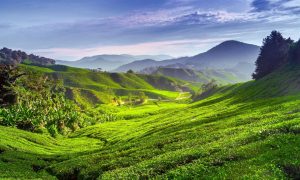KAT FATLAND ESCAPES THE HECTIC CITY LIFE OF HO CHI MINH CITY FOR A RELAXING WEEKEND ON THE DELTA OF ONE OF THE REGION’S LARGEST RIVERS.
A delta, with its countless distributaries dividing up the landscape into diverse angles and shapes and dictating where and for how long local citizens can take up shelter, can be a veritable refuge for someone trying to escape the chaos or frenzy of towns not divvied up by nature. The Mekong Delta in Southern Vietnam is a dramatic contrast to the bustling city of Ho Chi Minh, located just two hours north, and my trip to the Delta, pinned to a short visit to the city formerly known as Saigon, was relaxing to say the least. But, more than anything, the trip was enriching, which is perhaps something to be expected from a region as culturally and naturally diverse as the delta of one of Southeast Asia’s largest rivers.
TIME TO SHOP
The four-hour bus ride from Ho Chi Minh City to the city of Can Tho – a city located in the heart of the Delta – provided plenty of time to settle into the delta’s scenery. As the bus drove further and further from the city, the view of motorbike-clogged roadways against the backcloth of a smoggy sky slowly gave way to a verdant panorama of palm trees, rice paddies, and tiny brown streams carrying the occasional river canoe. These distributaries gradually morphed into giant channels of water, lined with houses on stilts, upon which boats tilted backwards with the weight of their produce. The last stretch of the journey was over the Can Tho bridge, the most expensive in Vietnam, and into the city center.
At first it seemed impossible that this city, so much calmer than that frenetic brother to its north, is Vietnam’s fourth largest. Our first morning on the Delta rid us of any incredulity, however, as we located the vast majority of the town’s population on the water. At six in the morning, watermelon juice in hand, we boarded our tour guide’s rickety old canoe and were paddled downstream towards the early morning water-market. The further we went, the livelier the river became. Barges carrying pineapples, dragon fruit, and rice-dwarfed boats like ours. The air thickened with smoke emitted from the motors of the boats. Men in hats held cigarettes clenched between their teeth as they threw watermelons down to whoever was selling them. It’s no wonder the streets of the city seemed quiet the day before: commerce here takes place on the riverbanks.
And just as soon as it began, the market was over. By the time we returned from a visit to a rice noodle factory and had taken black coffee in a storefront area shared with women busily gutting fish, the market was wrapping up. The heat of the sun served as no small reminder of the merits of getting an early start, along with other hazards of the tropical climate. Before we had embarked on our market outing, we could still spot the occasional mists shrouding the stilt-houses and palm trees on the banks. By ten-thirty the sky had given way to a total downpour, causing the scent of the produce, barely saved from being spoiled in the sun, to waft upstream all the way back to the hotel.
PAST AND PRESENT
In many ways, the Mekong region seems frozen in time. The slow ride down the Delta easily stirred me into thinking about what has changed since this region was first inhabited in the 4th century BCE – and what has remained the same. For thousands of years, the Delta has been one of the most fertile regions in Southeast Asia. The region is one of the largest global exporters of rice, second only to Thailand, and produces more rice than Korea and Japan combined. It only makes sense, then, that the area was once host to some of Asia’s largest empires, including the Funan, Chenla, and Khmer kingdoms, all wishing to benefit from the high-yielding region. Even the Romans were well aware of this land: archeologists continue to find remnants of their trade with the Funanese Empire in the ancient trading post of Oc Eo.
This rich cultural diversity is matched by the Delta’s natural milieu: only the Amazon boasts a higher level of biodiversity. During the first 10 years of research conducted in the region, over 1,000 species were found, including creatures once relegated to storybooks such as a spider with a foot-long leg span and a hot-pink, cyanide-producing “dragon millipede”. Astonishingly, much of the region is still yet to be fully explored, justifying its newly received title of “biological treasure trove” by the World Wildlife Fund.
The Delta accommodates the sort of cultural mélange so sought after by tourists and visitors, and yet the region remains relatively undeveloped. Somehow, the homes and municipal areas inhabited by the region’s 17 million residents are still engulfed by its lush greenery. This is due, in part, to the relative inaccessibility of the region. It is a delta after all, with islands in the middle of the largest riverbeds and peninsular villages simply unreachable by anything but a boat. Even in a bus, the roads must naturally yield to the river’s own navigation, but this slow-going is what makes the region what it is, and is what will hopefully help preserve its natural and cultural charm.
ENFORCED SECLUSION
One of our last Delta stops, after whiling way another day in Can Tho by biking through its rural townships, was a tiny island in the middle of the river further north. Turtle Island, located a twenty minute boat trip from either My Tho or Ben Tre ports, provided an anchor for our last night’s accommodation: a floating house.
We landed on the island in early evening, and after walking the length of it within an hour and using our sixth sense to scout out the island’s only bar, we retreated back to our rest house for some enforced, secluded relaxation.
In a way, our night in the floating house was a culmination of our time and experience on the Mekong; after a few days of sensing the cultural characteristics the river gives rise to, we spent the last night at the mercy of the movement of its current. Our room moved gently with every tiny wave, and offered a simple reminder that even if the area grows with tourist industries, the river and its subtle movements will maintain the atmosphere of calm, just as its brown, murky colour hides its secrets, at least from the layman’s eye.
Fly to Ho Chi Minh City from KL in just 1 hour and 50 minutes. From Ho Chi Minh, a bus connects visitors to the Mekong Delta region in approximately 2 hours.
This article was written by Kat Fatland for The Expat magazine.
Source: The Expat August 2012
Register for free on ExpatGoMalaysia.com
















